This guide shows how to speed up downloads in the freeware bittorrent client, Vuze. All bittorrent programs need to have their incoming and outgoing communications flow freely in order to achieve the highest download speeds and that is essentially what this guide is about.
This guide was put together using information given by the developers of bittorrent programs at their forums, guides and FAQs. There are no secret tricks, just the real basics of proper set up of a bittorrent program. Following these simple steps should result in increased download speed.
These are the basic principles of optimizing a bittorrent client, like Vuze, for speed:
- Choose a proper port to avoid ISP blocks and conflicts with other programs;
- Forward that port through any software firewall and router to allow incoming connections;
- Adjust internal settings based upon upload capacity of the internet connection to allow room for outgoing communications and to distribute upload efficiently.
There are some programs that claim to optimize speed in Vuze. Such programs are a scam and generally contain adware or spyware. I have seen it said, by the developers of all bittorrent programs, that nothing will increase your download speed in a bittorrent client more than the basic steps set forth herein.
This guide is applicable to all versions of Vuze (or the previous Azureus), BitTyrant and TopBT on Vuze.
[tab:The port]
Choosing A Proper Port
To avoid messing up a network connection that is already cleared, first check and see if your communications are blocked or are already clear. Have Vuze running when you go to test your port.
Click to Test Your Port Success-just go to Adjusting Internal Settings. Error- follow all steps.
Depending on your Mode setting, you may only see one number:
If you failed the port test above, then you should first set your port to a proper one. The most important choice here is to avoid using a port within the 6881-6999 range.
This was the range originally used by bittorrent programs and is often blocked by Internet Service Providers (ISPs). (If your port was in this range, change and re-test).
The safest choice is a port in the 49152-65534 range as this will avoid ISP blocks and possible conflicts with other applications.
[tab:Forwarding]
Forwarding The Port
A router will block incoming communications unless an exception is made.
All software firewalls will block incoming communications and most will also block outgoing communications, unless an exception is made. If you are "firewalled", then other people will NOT be able to initiate connections with you.
As there are many firewalls and routers, this guide can not give explanations as to each. However, there are guides available, on the internet for most firewalls and routers and this guide will link you to them.
Software Firewall - The permission should be set to allow TCP and UDP in both directions. Generally, you will have a choice to set permission for the Vuze port or for the Vuze program.
Setting permission for the port is the safer choice. You can check these options for guides:
- The help file of your software firewall is the best place to look;
- The µTorrent forum has some guides posted;
- PortForward.com Firewall Guides (choose firewall and then Vuze) also has some guides.
Router - There are two choices here. The easier way is to use UPnP (NAT-PMP for Apple). However, this has a possible security issue. Using UPnP, or NAT-PMP, allows any program to create a port mapping through the router without consent of the owner. The other choice is to manually forward the port through the router. This does not have that security issue, but involves going through several steps to accomplish. Using the guides linked herein, this should not be that difficult and is the preferred method.
UPnP (NAT-PMP in Apple) - The Easy Way - Enable UPnP (NAT-PMP for Apple) in Vuze and router.
Automatically refresh mappings when NAT status is "firewalled" should also be enabled.
Manual Forwarding-The Preferred Way
- UPnP (NAT-PMP) must be disabled in Vuze (see Images above).
- Use the Static IP Guide.
- Set permission for Vuze port. This should be set to allow both TCP and UDP communications.
You can check these options for guides:
- The help file of your router is the best place to look;
- Portforward.com Azureus Router Index has guides for most routers;
Click Here to Re-Test Port Success-Proceed to next step. Error- re-do steps.
[tab:Adjust Settings]
Adjusting Internal Settings
The most important setting here is to cap upload in Vuze to 80% of your overall upload capacity. Setting upload in Vuze is a fine line. The more upload you give, the more download you will get from other peers.
However, if upload is set too high, or to unlimited, then download speeds will suffer as outgoing communications (acknowledgment signals, resend requests etc) will be interfered with.
Other adjustments are made here to distribute your upload so that you receive back the most download from other peers.
Mode
To make sure that you can see all the options referenced here you should be in Mode = Advanced.
Speed Test: Speedtest.net (Click for Test)
First the upload capacity of your internet connection must be determined by taking an online speed test. Speedtest.net has test locations worldwide and will highlight the one closest to you.
To take the test you must have Flash installed and javascript enabled.
Before taking the speed test, press Settings in the upper right of the speedtest.net page. This will take you to another page. At the bottom of that page is the "Global Settings" options. Set "Speed Measurement" to kilobytes and press "Save" .
This will facilitate entry into the calculator below and will lessen confusion as qBittorrent shows speeds in kilobytes.
You should stop all internet activity, including torrents, before taking the test and the test should be taken a few times to obtain a reliable average. Results will now show in KiloBytes.
It is the upload rate that is important here.
Another Way To Test Upload Speed
For most people these test results will be reliable.
However, you may wish to do a double check on real life upload speed. When you are seeding a torrent with a good number of peers and you are using your upload cap, set upload to unlimited and watch for about 5-10 minutes and see where upload settles in at.
Then input that number into the calculator in the kiloBytes section.
NOTE: Some ISPs will show inaccurate results on the speed test. If your ISP has anything like Comcast's PowerBoost, then your results will show higher than the actual speed of your connection. PowerBoost provides a burst of download and upload speeds above your provisioned download and upload speeds for the first 10MB and 5MB respectively. Since the speed test involves relatively small files, this will skew results upward. If you have PowerBoost, or something similar, you should initially use the speed test results and then use the test method in the paragraph above.
Calculator: Azureus Upload Settings Calculator
Once you have an average upload speed for your connection go to the online Azureus Upload Settings Calculator. Although designed for Azureus, this calculator will work for all bittorrent clients.
This calculator was created by the8472 a contributor to Vuze (fka Azureus) and part of the team that created Bittorrent Protocol Encryption.
Enter your average upload speed in the appropriate box.
The calculator will automatically give the proper figures to adjust various options in µTorrent.
Input Results Into Vuze - Screen shots of locations in Vuze of settings to be adjusted:
[tab:Peers and Encryption]
Peer Sources & Encryption
Having the proper peer sources enabled, such as Peer Exchange (PEX) and Distributed Hash Table (DHT), will help download speeds as they will help you find additional seeds and peers for a torrent.
Encryption was primarily designed to thwart Internet Service Providers interference with bittorrent. Having encryption enabled and allowing incoming legacy (non-encrypted) connections will provide you with the largest pool of seeds/peers to select from.
The settings for peer sources are at Tools>Options>Connection and should be set as in the below image:
The settings for encryption are at Tools>Options>Connection>Transport Encryption.
The settings shown in the image below will provide the highest encryption level and still allow connection with the most seeds/peers:
[tab:END]
Good Torrents
The general rule here is to choose torrents that have a high seed to peer ratio.
- Seeds have 100% of the content associated with the torrent and are only uploading to peers.
- Peers also upload to other peers, but are also looking for other peers to upload to themselves and their download capacity is almost always higher than their upload capacity.
This applies even though one swarm has significantly more active users than another. For example, a torrent with 30 seeders and 70 peers (30% seeders) will generally be faster than one with 500 seeders and 2500 peers (20% seeders) as the average upload capacity available to the peers will be higher.
SOURCE | LINK (Techsupportalert.com) | LANGUAGE | ENGLISH |


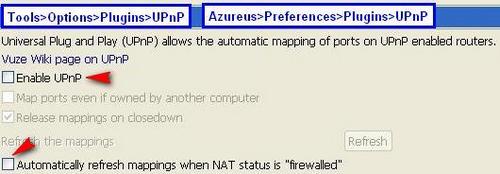






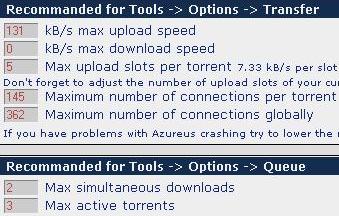
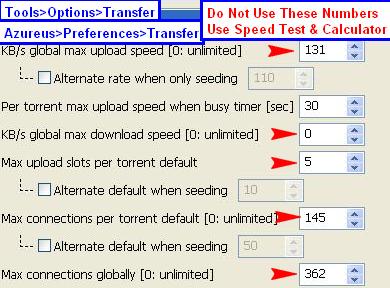
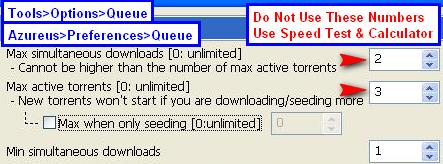
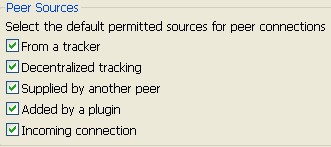
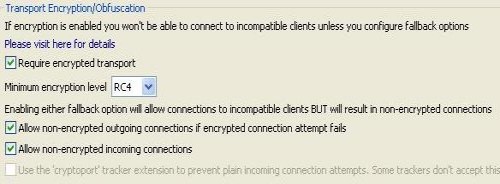
Comments are closed.